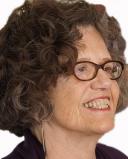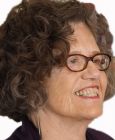Adoption
'The Son With Two Moms': A Story of Same-Sex Adoption
A compelling story of a Black boy adopted by a white lesbian couple.
Posted March 18, 2021 Reviewed by Jessica Schrader
A few weeks ago I discovered Tony Hynes, through his 2014 book, The Son with Two Moms, and in a book talk he gave online through the Center for Adoption Support and Education (C.A.S.E.). I was impressed with him and with the book.
Mary Hynes and Janet Simons, a white lesbian couple, became foster parents for Tony in the early 1990s when he was 3 years old, taking custody of him from an orphanage in Maryland. Born into a large Black extended family, his birth mother could not care for him because she suffered from schizophrenia. His grandmother, the matriarch of the family, was already parenting several children, including Tony's older sister. The grandmother placed Tony in an orphanage at 1 year for what she thought was a temporary stay. When she found out that a lesbian couple was fostering him and had applied for adoption, she hired a lawyer and filed a suit seeking custody, arguing that he should be with his Black family. The court canceled the adoption and the case dragged on. At age 7, Tony told a judge that he wanted to live with his moms. The court devised a compromise, giving both the grandmother and the white couple legal guardianship, but giving the moms physical custody. The court order said Tony should spend every other weekend and holidays at his grandmother's house. Today, it is easier for lesbian and gay couples to adopt, but there is even more of an emphasis on placing children with a biological family member, particularly if the birth family is Black.
What is most appealing about The Son with Two Moms is that Hynes is able to recreate his feelings when all this was happening, often reporting some that were not politically correct. He remembers that he hated going to his grandmother's even though he got to know his sister, cousins, aunts and uncles, and even his birth father. Tony said: "I had always wanted a father, but I never wanted him." He viewed his father as irresponsible and distant.
Because of the custody battle, Tony probably felt he had to take sides, that he couldn't love both families. This feeling was reinforced by his grandmother's homophobia and by his white parents' failure to initiate contact with the Black family, even though they lived only a 30-minute drive away. One or both of his moms drove him to his grandmother's house, but never went in, never tried to relate, never invited anyone from the Black extended family to their home. Even when the grandmother was on her deathbed, Janet drove Tony to the hospital, waiting for him in the lobby while he visited with his many Black relatives. When I asked Tony during the webinar whether he would have preferred that his white and Black families had had more of a relationship, he said: "Absolutely."
Both Mary and Janet were liberal, anti-racist, and social activists, and lived in the mixed-race, mixed-class neighborhood of Tacoma Park, Maryland. But they had not experienced crossing race and class lines in their personal life. (Isabel Wilkerson in her recent book, Caste, explains why this is common in the U.S.) It is my experience that the adoptive parents, especially if they have class and race privilege, have to initiate contact and work at creating an extended family containing both adoptive and biological kin. Tony said of the moms who raised him: "Janet and Mary came from middle and upper-class backgrounds. Both had Ivy League educations. Both had good careers. Both had no kids." To have more interaction between birth and adoptive families often means crossing not only race and class lines, but also cultural differences. This is not easy, but can be done. I have interviewed a married white, gay, male couple who adopted two Black girls from different families from foster care when they were under 5. From the beginning, they met once a month with the birth families, socialized with them, and eventually invited the birth parents to visit their home. Their white extended family members, all of whom didn't live nearby, visited too when they were in town. But the girls never went by themselves to their Black birth families. The two dads went with them.
When Tony was 12, one of his moms, Mary, died of cancer. Mary was almost 20 years younger than Janet, had initiated the foster care placement, and took primary parenting responsibility, which explains why he took her last name. Even though he grieved his loss, he admitted that it was now easier having only a single mom. In public, and even among friends, his family was less conspicuous and subject to less scrutiny. Janet did not re-partner, but even as the grandmother's hostility declined, especially after one of her other grandchildren came out as gay. Janet did not try to integrate more with the Black family.
The goal of The Son with Two Moms is to combat homophobia and demonstrate that a lesbian or gay family can be effective parents. In college and afterward, Tony worked on the successful campaign to pass gay marriage legislation in Maryland. There is much less in the book about racial challenges in transracial adoption. When I asked him about this in the webinar, Tony said it was partially the times, as the book was published the year before the Supreme Court decision in 2015 to legalize same-sex marriage in all states. If he writes a sequel, he declared, it will focus on issues of race in adoption.
In the meantime, we can Zoom into a virtual interactive lecture Tony will give on Black Interracial Adoption on Monday, March 22 for the Center for Adoption Support and Education, where he is a training specialist.


